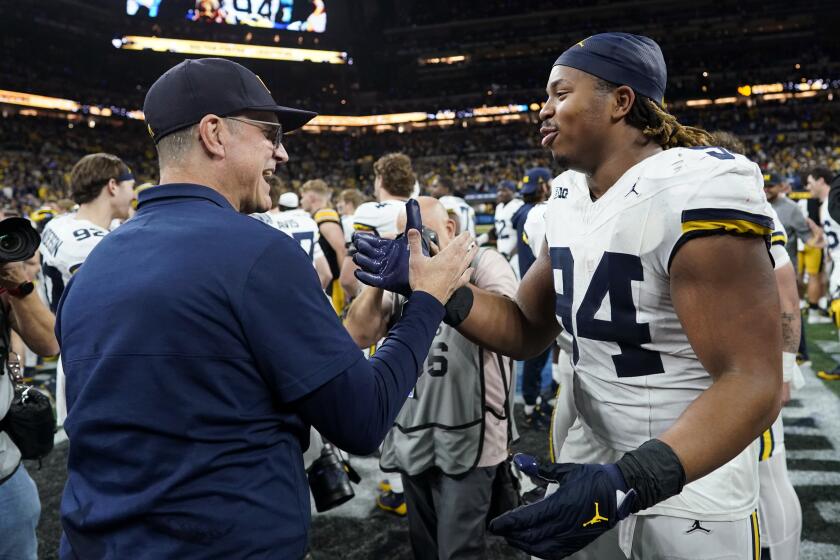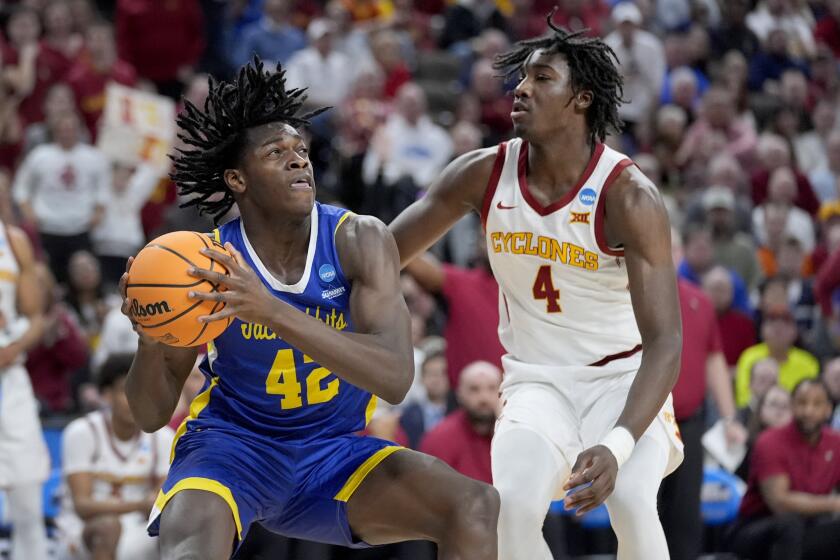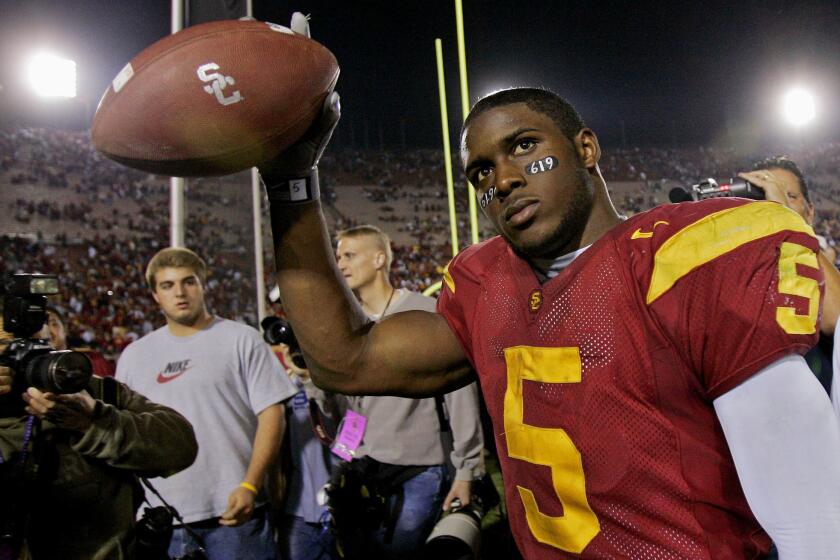Sports salary inflation: $1-million man march
Boom times or bust, expansion or recession, athletes’ pay seems immune to the laws of economics — it just keeps rising, inexorably and exponentially, far outpacing inflation.
SPORTS SALARY INFLATION
$1-million man march
Boom times or bust, expansion or recession, athletes' pay seems immune to the laws of economics — it just keeps rising, inexorably and exponentially, far outpacing inflation.
Zack Greinke and Josh Hamilton, meet hyperinflation.
The Dodgers’ signing of Greinke for $147 million over six years, an average $24.5 million a year, and the Angels’ five-year, $125-million deal with Hamilton are the latest examples of how pro-athlete salaries keep soaring.
That’s been the trend for decades, of course, leading to salary caps in pro football and basketball. But even within those limits player salaries have climbed to levels that far outpace inflation.
In baseball, salaries have zoomed since the advent of free agency in the mid-1970s to the point now where players can command whatever the market will bear.
And clubs such as the Dodgers and Angels, expecting to be enriched by lucrative television deals, are willing and able to pay once-unthinkable salaries in hopes of bringing home a championship.
Consider: Babe Ruth made headlines in 1930 for earning $80,000, more than President Hoover (Ruth: “I had a better year”). After accounting for inflation, that sum today would be $1.1 million, but that’s only one-third of the $3.2-million average player salary in Major League Baseball.
Put another way, even the lowest-paid players in baseball — the MLB minimum is $480,000 a year — earn $80,000 more than President Obama.
Since 1985, the average MLB salary has jumped to $3.2 million from $371,000, nearly a nine-fold increase. The average National Basketball Assn. salary has shot up 16-fold to $5.2 million from $325,000 in that period, and the average National Football League salary has risen to $1.9 million from $194,000.
Average Americans can only wish they had the salary inflation enjoyed by pro sports figures.
The median U.S. household income in 1985 (meaning half were higher, half lower) was $23,618, according to the Census Bureau. By 2009, the most recent year for which figures are available, it had more than doubled to $49,777, but that simply kept household incomes on par with inflation over that span.
In contrast, Greinke’s average salary is more than 20 times the $1.2 million Fernando Valenzuela earned pitching for the Dodgers in 1985.
Just think: If all Americans’ incomes had soared that much, the median U.S. household income would now be $472,360.
Bank-breaking work
In good economic times and bad, athlete salaries just keep climbing. Many Americans still feel the effects of the last painful recession, but the entertainment that major sports leagues provide still generates enough financial resources — either through attendance or TV viewership — to support multimillion-dollar salaries for professional athletes.
In the mid-1980s, stars in pro football, basketball and baseball generally were earning less than $2 million a year. But then cam Alex Rodriguez's 10-year, $252-million deal with the Texas Rangers in 2000 (he'd earned about $4.4 million with the Seattle Mariners in 1999), and now double-digit-million-dollar contracts are the norm for superstars.
Here are some examples of escalating player salaries since 1985:
| MLB | NBA | NFL | |
|---|---|---|---|
| 1985 | Dale Murphy $1.6 million | Larry Bird $1.8 million | Joe Montana $1 million |
| 1995 | Ken Griffey Jr. $7.6 million | Hakeem Olajuwon $5.3 million | Brett Favre $2.9 million |
| 2005 | Mike Piazza $16.1 million | Kobe Bryant $15.9 million | Tiki Barber $6 million |
| Today | Josh Hamilton $25 million** | LeBron James $16 million | Peyton Manning $18 million |
* = Inflation adjusted using Consumer Price Index.
** = Average of five-year contract.
Get our high school sports newsletter
Prep Rally is devoted to the SoCal high school sports experience, bringing you scores, stories and a behind-the-scenes look at what makes prep sports so popular.
You may occasionally receive promotional content from the Los Angeles Times.



